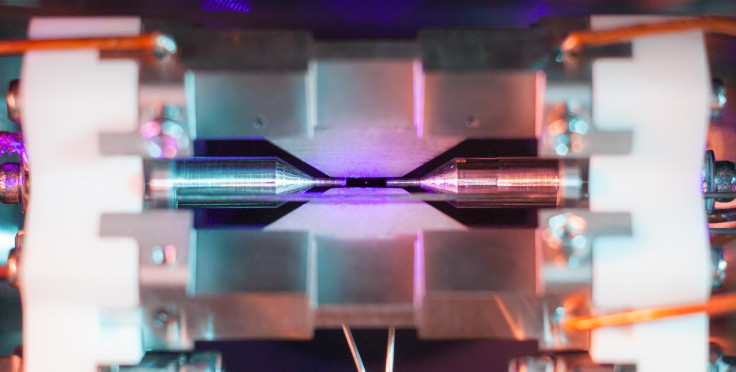Oxford scientists capture breathtaking photo of a single atom suspended in an electric field
A strontium atom is suspended in high vacuum and illuminated between two electrodes with a blue laser.

An image of a single Strontium atom captured by physicists at the University of Oxford has won a science photography prize. Shot by David Nadlinger at the Clarendon Laboratory at the university's department of physics, the image is described as a "Single Atom In An Ion Tap".
The image, shot using a normal digital camera on a long exposure, is a result of an experiment that Nadlinger and his team are working on — the development of quantum computing using laser-manipulated trapped ions, notes a report by the University.
It is a shot of a blade ion trap in an ultra-high vacuum system. A single strontium ion is visible in the centre of the trap between the needle-like electrodes. The distance between the tips of the needles is only 2.3mm.
The image is not stitched together, or heavily edited, and shows the ion trap as is. The faint fluorescence of a single atom is what the physicists have managed to capture with an exposure time of 30 seconds.
Metal electrodes held the atom in place completely motionless and a blue-violet laser illuminated it for the camera. It beat out over 100 entries from around the world to claim the Engineering and Physical Sciences Research Council (EPSRC) science photography competition.
"The idea of being able to see a single atom with the naked eye had struck me as a wonderfully direct and visceral bridge between the minuscule quantum world and our macroscopic reality," said Nadlinger.
"A back-of-the-envelope calculation showed the numbers to be on my side, and when I set off to the lab with camera and tripods one quiet Sunday afternoon, I was rewarded with this particular picture of a small, pale blue dot," he added, explaining how he captured the breathtaking moment.
Other entries for this competition included a two-part selfie taken by a robot with its robotic arms as well as an extreme close-up of a butterfly wing shot with the help of an atomic force microscope. The butterfly wing picture was the winner in the "weird and wonderful" category, reports the Independent.






